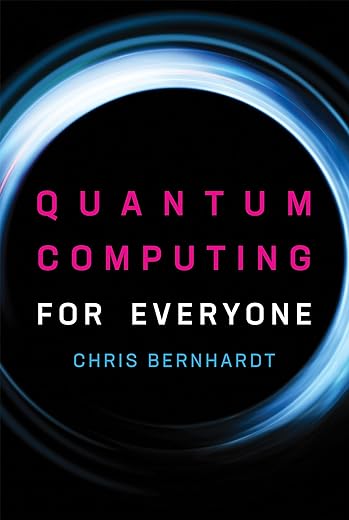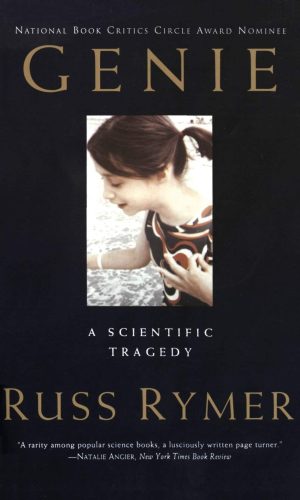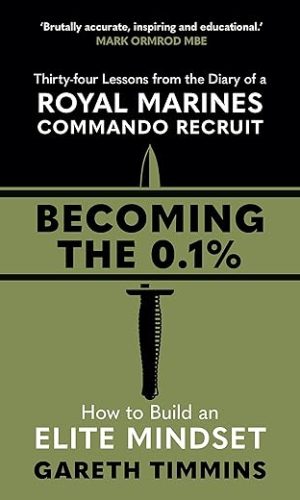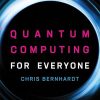Quantum Computing for Everyone (Mit Press)
£12.20£13.80 (-12%)
Quantum computing is a beautiful fusion of quantum physics and computer science, incorporating some of the most stunning ideas from twentieth-century physics into an entirely new way of thinking about computation. In this book, Chris Bernhardt offers an introduction to quantum computing that is accessible to anyone who is comfortable with high school mathematics. He explains qubits, entanglement, quantum teleportation, quantum algorithms, and other quantum-related topics as clearly as possible for the general reader. Bernhardt, a mathematician himself, simplifies the mathematics as much as he can and provides elementary examples that illustrate both how the math works and what it means.
Bernhardt introduces the basic unit of quantum computing, the qubit, and explains how the qubit can be measured; discusses entanglement–which, he says, is easier to describe mathematically than verbally–and what it means when two qubits are entangled (citing Einstein’s characterization of what happens when the measurement of one entangled qubit affects the second as “spooky action at a distance”); and introduces quantum cryptography. He recaps standard topics in classical computing–bits, gates, and logic–and describes Edward Fredkin’s ingenious billiard ball computer. He defines quantum gates, considers the speed of quantum algorithms, and describes the building of quantum computers. By the end of the book, readers understand that quantum computing and classical computing are not two distinct disciplines, and that quantum computing is the fundamental form of computing. The basic unit of computation is the qubit, not the bit.
Read more
Additional information
| Publisher | MIT Press, Reprint edition (22 Sept. 2020) |
|---|---|
| Language | English |
| Paperback | 216 pages |
| ISBN-10 | 0262539535 |
| ISBN-13 | 978-0262539531 |
| Dimensions | 15.39 x 1.4 x 22.86 cm |







by Barry Cox
It does cover a fair amount of interesting knowledge. I found it a good place to start.
by Nigel Morton
I have two minor criticisms of the book: I think the editing could be improved slightly (so I hope there is a second edition) and I do think there might have been some value in touching on the use of complex numbers at the end.
However, nits aside, I like this book. The author is absolutely correct in saying that some straightforward maths illuminates the subject in a way that text could not do. While the maths may look daunting it really isn’t. The mathematical approach clearly explained a number of concepts that I’ve never felt happy with before. Having finished the book I have now found it much easier to approach some of the other literature in the area.
by bobalfern
For eveyone? Probably not, by the writer makes a HUGE effort to make the topic accessible without ditching the essential minimum content.
I found this book really helpful. Before reading it I had no idea how quantum computing could work. Now I have at least the basic understanding.
I, for one, am very grateful for this book.
by Andrew Ross
In less than 200 pages of delightfully lucid mathematical prose, Chris Bernhardt has crafted a truly masterful introduction to the otherwise forbidding field of quantum computation for anyone with high-school math who is prepared to put in the hours to master the finer points. As he modestly says, the last twenty years have brought great advances in the clarity of some of the required elements here, plus agreement on what needs to be said and what can safely be left for a later run through the topic. I tackled a 700-page “introductory” text on all this twenty years ago and was frankly defeated by half of it, despite a career that involved deep dives into quantum theory and computer science. Now, to my great relief, the key ideas seem smooth and logical.
Bernhardt makes it easy from the start by limiting his scope to what he can explain without complex numbers, which I thought was flunking out until I saw how much he managed to say without loss of rigor within that limit. Inevitably, there was a sacrifice, and he had to stop short of explaining quantum Fourier transforms and Shor’s algorithm, which is a pity, but for most readers the trade-off will probably be good. I was delighted anew with just how elegantly Dirac algebra copes with all the hard work that comes with entangled states, and greatly relieved that Bernhardt spelled out all his derivations fully, so that one could read his text line by line with full understanding, rather than having to go off and make cryptic notes, or, worse, do fiddly exercises, before taking up the book again.
Even more impressively, Bernhardt has managed to infuse what could otherwise have been a rather dull plod, to be fair, with his own excitement at the amazing new horizons opened up by the emergence of quantum computing as a new paradigm. As he says, and as we should expect from the parallel situation in physics almost a century ago, computation is quantum computation, and classical computation is only a special and limited case of it. Once we develop the technology, we shall doubtless see our present computers as clunky calculators that could never simulate reality except in the most superficial way. We shall simulate chemical reactions and biochemical processes so accurately that a new world of artificial life will be born, which makes a nice final frontier for us.
On the practical side, I would have welcomed a smoother integration of the Bell inequalities into the narrative to flesh out the later discussion of quantum teleportation and encryption, and a fuller discussion of how Fredkin gates and billiard-ball computers relate to deeper discussions in physics, but this would likely go too far. I would have welcomed complex numbers too, if only to allow the text to explain Shor’s algorithm properly, but again this would burst the author’s self-imposed bounds. More trivially, I found about half a dozen typos, though none were bad enough to trip up a careful reader. In summary, this book is an excellent example of how to introduce tricky stuff to new readers – but it’s certainly not for everyone!
by Benji Boy
Great book but lake even if some demonstration are missing or weakly explain also the lake of exercice make the understanding superficial.
by bob
The book says itself that it is not about building quantum computers but about quantum maths, so why is it not titled quantum maths.
by jonas.nordquist@t-online.de
This books gives you the theoretical and mathematical background of quantum computing and through that the difference to classical computing. I would maybe turn down the “for everyone” message on the front page, and rather say for everyone who likes mathematics and has a genuine interest to understand the theory. If you do, then you’ll truly enjoy it!
by K
This is a great introduction to quantum computers. If you are new to linear algebra, this chapter will slow you down, but you will get a good understanding of the language of this subject (you don’t need to have an A level in maths though). This book is exactly what I was looking for.